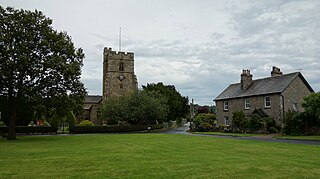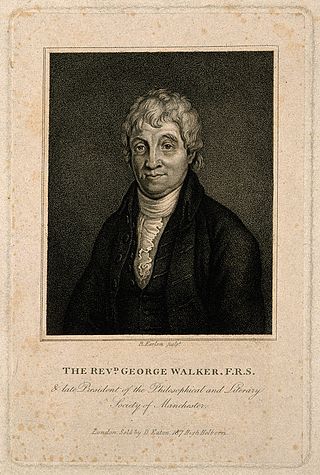Related Research Articles

Philip Doddridge D.D. was an English Nonconformist minister, educator, and hymnwriter.
Frankland may refer to:

Natland is a village and civil parish about two miles (3 km) south of Kendal in the South Lakeland district of Cumbria, England, close to the village of Oxenholme. In the 2001 census the parish had a population of 747, increasing at the 2011 census to 796.

Rathmell is a village and civil parish in the Craven district of North Yorkshire, England. The population of the civil parish in the 2011 census was 305. It is close to the River Ribble and about three miles south of Settle. Other towns and villages nearby include Wigglesworth, Tosside, Giggleswick and Long Preston.
Samuel Jones was an English Dissenter and educator, known for founding a significant Dissenting academy at Tewkesbury.
Timothy Jollie,, was a nonconformist minister and notable educator in the north of England.

Richard Frankland (1630–1698) was an English nonconformist, notable for founding the Rathmell Academy, a dissenting academy in the north of England.
The dissenting academies were schools, colleges and seminaries run by English Dissenters, that is, those who did not conform to the Church of England. They formed a significant part of England's educational systems from the mid-seventeenth to nineteenth centuries.

George Walker was a versatile English Dissenter, known as a mathematician, theologian, Fellow of the Royal Society, and activist.
Attercliffe Academy was a Dissenting academy set up in the north of England by Timothy Jollie.
John Jennings was an English Nonconformist minister and tutor of an early dissenting academy at Kibworth, Leicestershire, the original institution that became Daventry Academy. Jennings through his teaching and pedagogic writings was a major influence on the Dissenting educational tradition.
William Pell (1634–1698) was an English nonconformist minister, ejected in 1662, a tutor of Durham College subsequently imprisoned for illegal preaching.
Joshua Bayes (1671–1746) was an English Nonconformist minister.
John Chorlton was an English presbyterian minister and tutor.
Thomas Cotton (1653–1730) was a dissenting minister of London.
Thomas Dixon was an English nonconformist minister and tutor.

William Tong (1662–1727) was an English Presbyterian minister, at the heart of the subscription debate of 1718.
Henry Finch (1633–1704) was an English ejected minister.

Caleb Rotheram D.D. (1694–1752) was an English dissenting minister and tutor.
Samuel Cradock, B.D. (1621?–1706) was a nonconformist tutor, who was born about 1621. He was an elder brother of Zachary Cradock.
References
- Stephen, Leslie, ed. (1889). . Dictionary of National Biography . Vol. 20. London: Smith, Elder & Co.